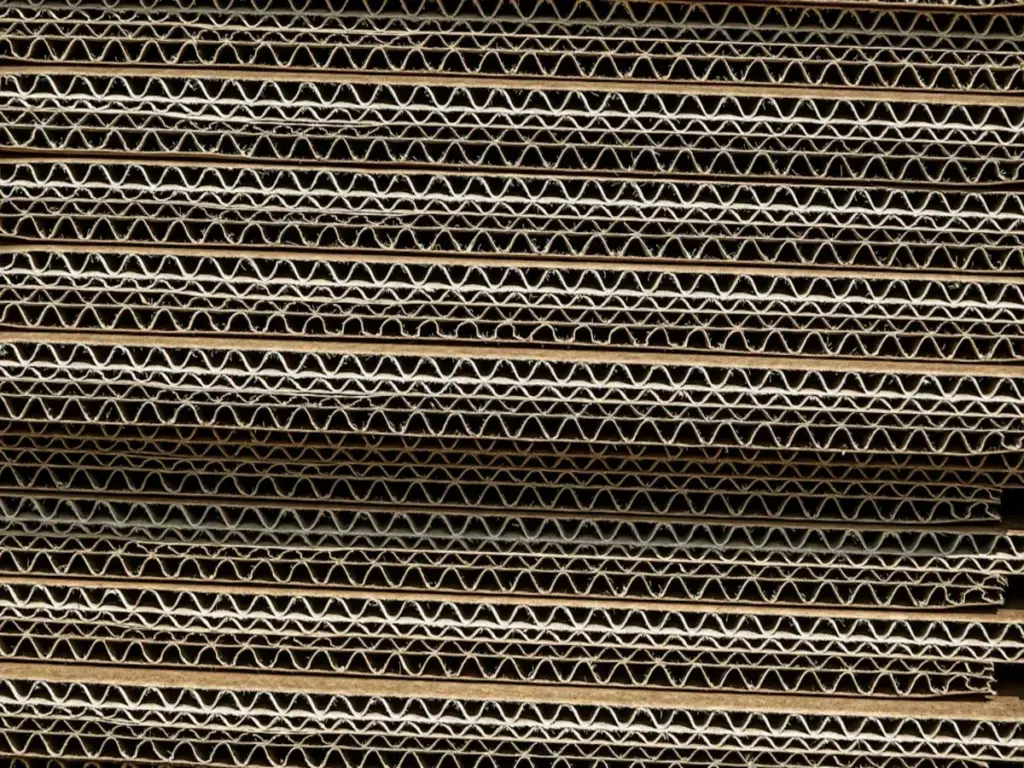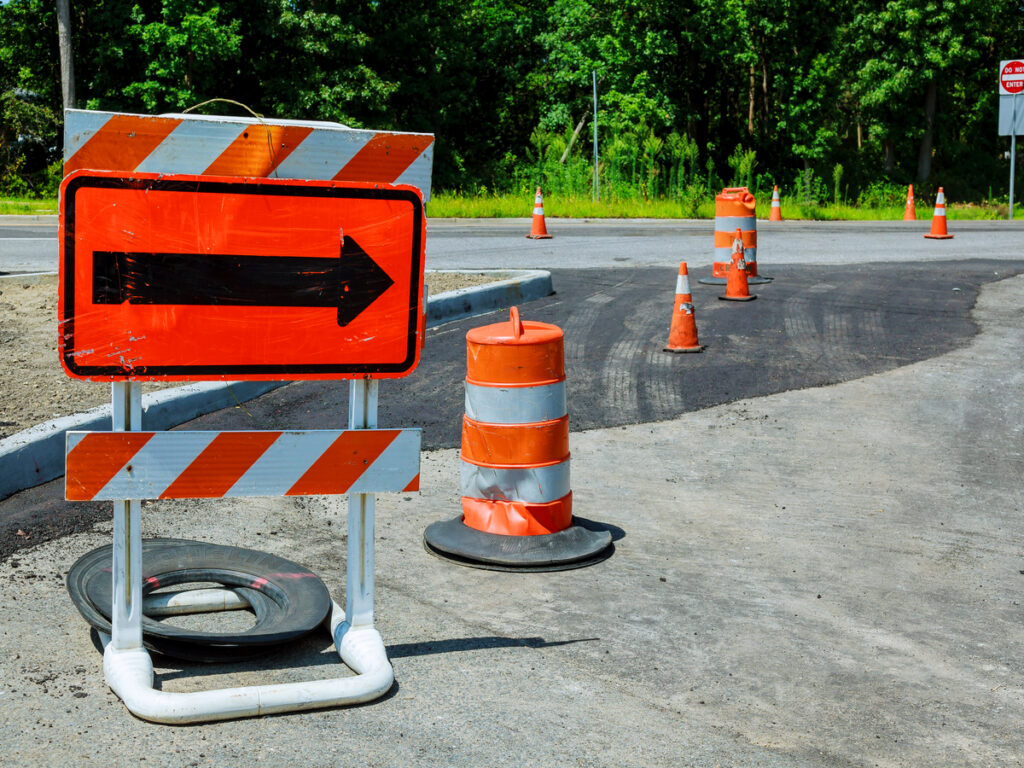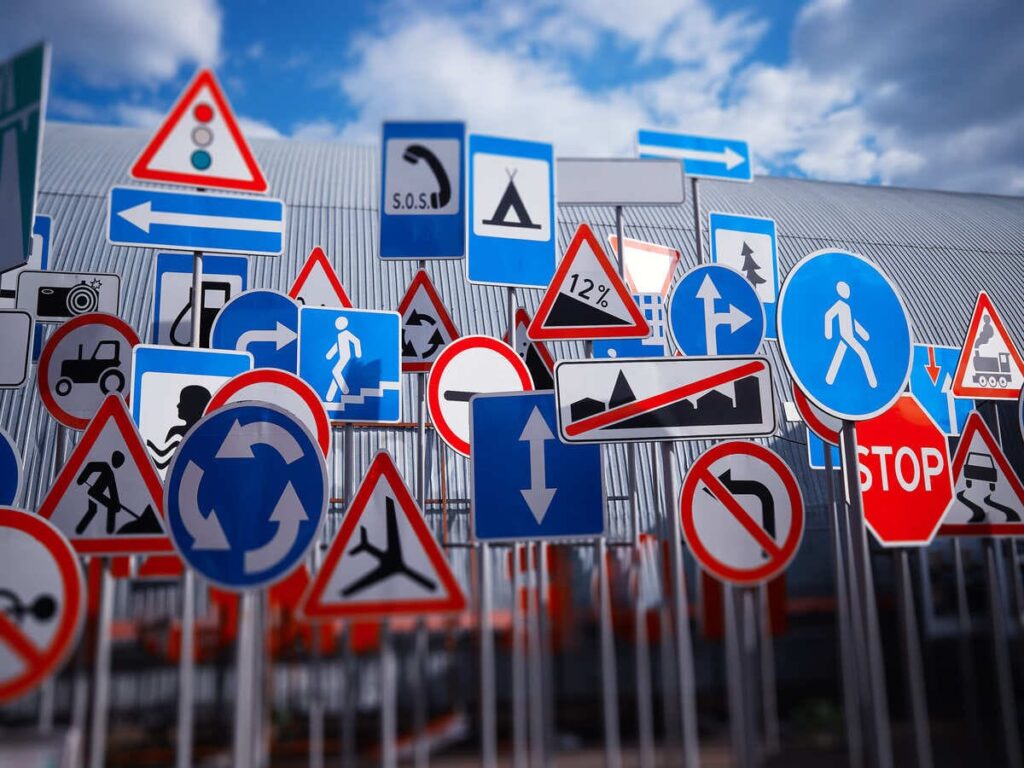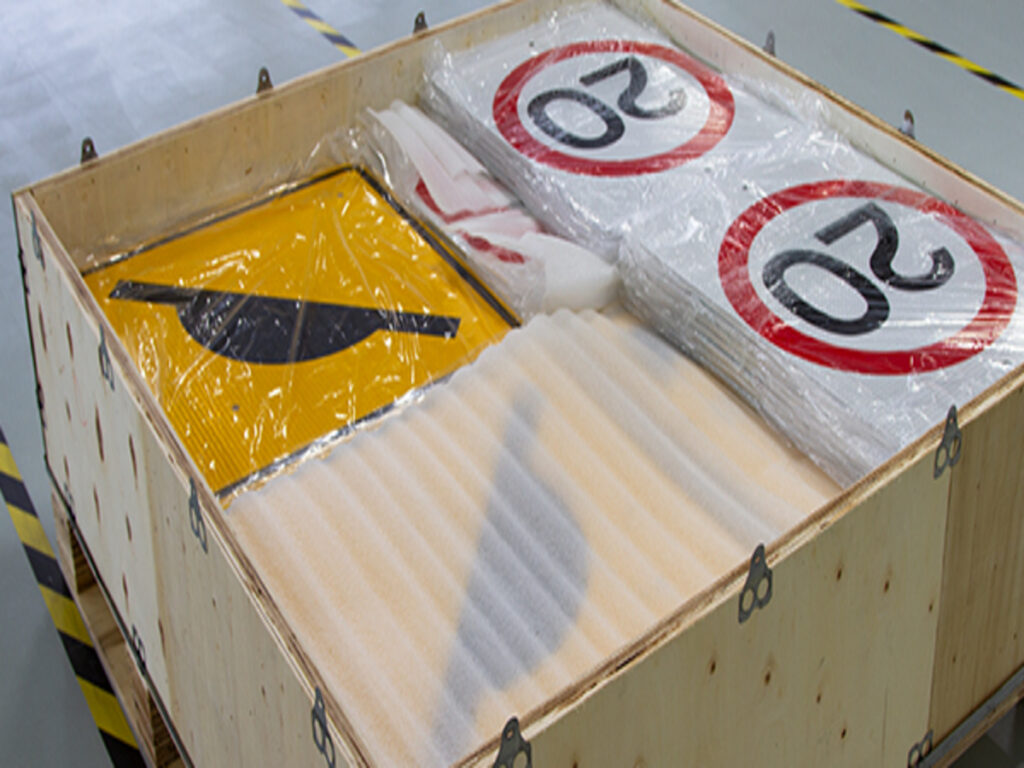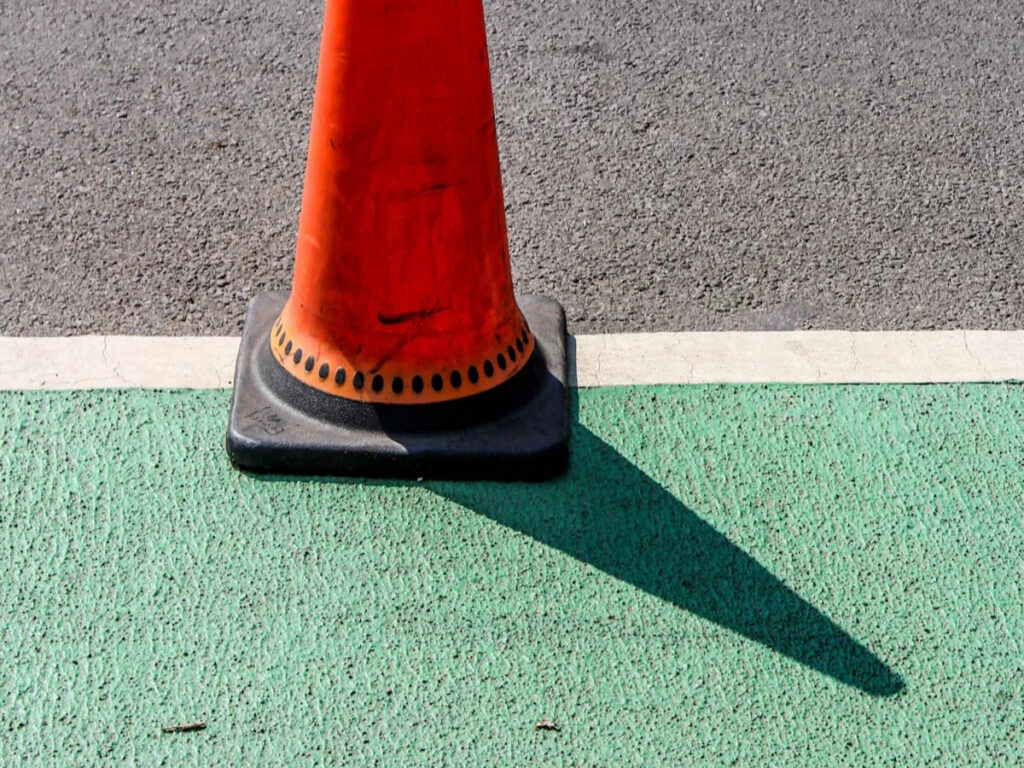
Você reage à cor rapidamente quando dirige. A psicologia colorida molda como você se concentra, especialmente em momentos de alta estresse. Cones de tráfego refletivo usam cores brilhantes e alta visibilidade para chamar sua atenção em três segundos. Este efeito mantém os motoristas alertas e reduz os desvios da pista. Estudos de direção mostram que a visibilidade de pregos de estrada LED coloridos, especialmente branco, Melhora a manutenção da faixa e o controle de direção.
OPTRAFFIC oferece alta visibilidade Cones de tráfego reflexivo designed to grab attention and enhance safety on the road. With durable materials and bright, reflective colors, OPTRAFFIC cones for sale ensure that drivers remain aware and focused, helping reduce accidents and improve traffic flow in all conditions.
Takeaways -chave
- Bright orange and reflective traffic cones grab drivers’ attention quickly, helping them stay focused and reduce lane deviation by up to 40%.
- The 3-second rule helps drivers keep a safe distance, giving enough time to notice hazards and react safely on the road.
- Good visibility from cones and lane markings improves drivers’ ability to judge distances and stay centered in their lanes, especially in low-light or bad weather.
- Color psychology shows that orange signals caution and alertness, helping drivers react faster and make safer decisions.
- Using reflective cones in construction zones and at night boosts safety by making lane boundaries clearer and reducing accidents.
Lane Deviation
O que é
Lane deviation happens when you move away from the center of your lane while driving. You may not notice small shifts, but these changes can affect your control. Researchers use several ways to measure lane deviation. Here is a table that shows the main metrics:
| Métrica | Definição / Thresholds | Measurement Context |
|---|---|---|
| Average Lateral Deviation | Mean lateral position deviation from lane centerline | Driving simulators and real traffic |
| Maximum Lateral Deviation | Maximum lateral displacement recorded during driving | Driving simulators and real traffic |
| Standard Deviation of Lateral Position (SDLP) | Variability of lateral position over time | Driving performance studies |
| Lane Drifts (LDmlp) | Lateral deviation > 100 cm from mean lateral position for ≥ 8 segundos | On-the-road driving tests |
| Lane Drifts (LDalp) | Lateral deviation > 100 cm from absolute lateral position for ≥ 8 segundos | On-the-road driving tests |
You can see that these measurements help experts understand how much you move within your lane. They use these numbers to study how visibility and other factors affect your driving. When visibility drops, you may find it harder to keep your car centered. Good visibility helps you react faster and stay in your lane.
Por que isso importa
Lane deviation matters because it connects directly to your safety and the safety of others. When you drift out of your lane, you increase the risk of accidents. Real-time monitoring of lane position and visibility helps experts predict when crashes might happen. If you keep your car centered, you lower the chance of collisions.
- Lane Departure Warning (LDW) systems help drivers by alerting them when they leave their lane.
- Studies show LDW systems can reduce all crashes by 18%, injury crashes by 24%, and fatal crashes by 86%.
- Trucks and passenger vehicles with LDW have seen crash reductions of up to 53%.
- These systems work best when drivers pay attention to visibility and respond quickly.
You play a key role in road safety. When you focus on visibility and lane position, you help prevent lane deviations and keep everyone safer. Better visibility from reflective cones and clear lane markings gives you the cues you need to stay alert. Every second counts, and your choices make a difference.
3-Second Rule
Definição
You use the 3-second rule every time you check your distance from the car ahead. This rule helps you keep a safe space and react quickly to sudden changes. O Conselho Nacional de Segurança recommends that you always keep at least a three-second gap between your car and the vehicle in front of you. You measure this by picking a fixed roadside object. When the car ahead passes it, start counting: “one-one thousand, two-one thousand, three-one thousand.” If you reach the marker before you finish counting, you are too close.
- The 3-second rule gives you about 1.5 seconds to notice a hazard and 1.5 seconds to react and stop.
- This time-based rule works better than measuring distance because it adjusts as your speed changes.
- You should add more seconds if you drive in rain, névoa, ou trânsito intenso. Large vehicles or towing also need extra time.
- Distractions can slow your reaction, so keeping the right gap is even more important.
You help improve road safety when you follow this rule. You give yourself enough time to respond, que diminui o risco de acidentes. Good visibility makes it easier for you to judge the gap and react in time.
Percepção Visual
Your eyes and brain work together to keep you safe on the road. You rely on visibility to spot hazards, lane markings, and traffic cones. When visibility is high, you can judge distances and lane position better. The 3-second rule depends on your ability to see and process what happens ahead.
To understand more about how visual cues like traffic cones influence driver behavior, Confira o blog A psicologia por trás dos cones de trânsito: Como a presença visual deles molda o comportamento público. It dives deeper into the science of visual perception and how traffic cones play a critical role in road safety and driver awareness.
Color Psychology
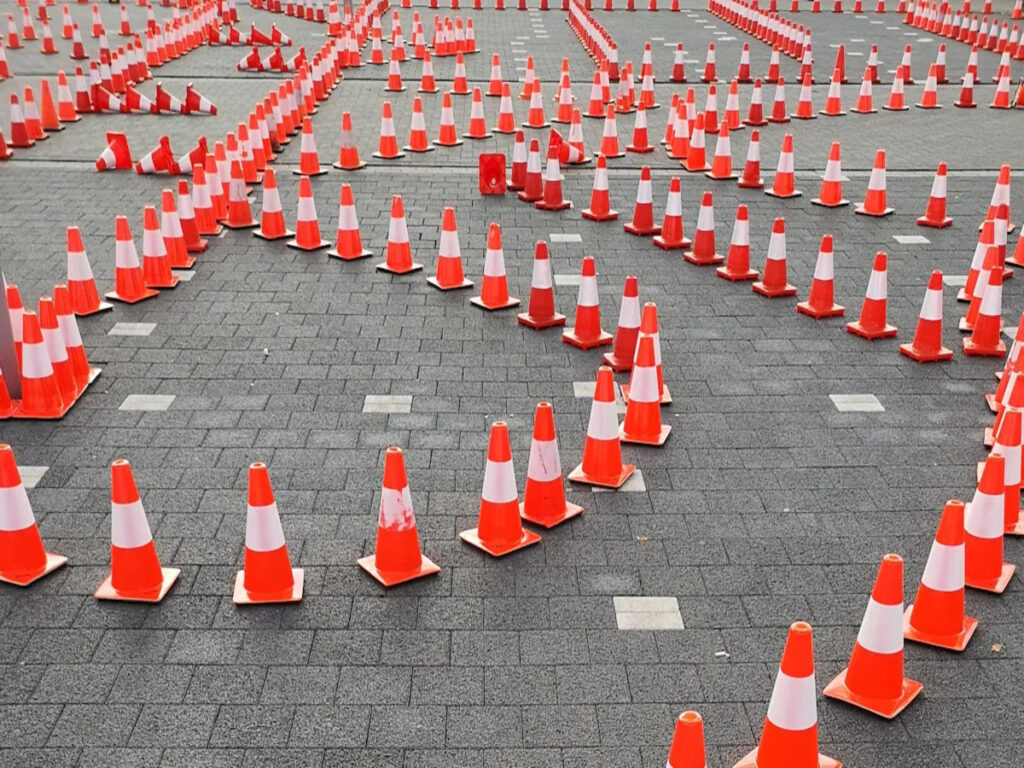
Orange and Alertness
You notice cones de laranja right away when you drive. This orange color stands out more than most others on the road. Traffic cones use orange because it grabs your attention and signals caution. You see orange on dashboard warning lights in your car. These lights tell you to pay attention, but they do not mean you need to stop right away. Car makers use orange and yellow for these warnings because they know you will notice them quickly. This helps you stay alert and ready to act.
Orange cars also show how color affects safety. Durante o dia, orange vehicles have high visibility, almost as much as yellow cars. You can spot them easily, Mesmo de longe. À noite, orange cars become a bit harder to see, but they still have a lower crash risk than most other colors. This means orange helps you notice things on the road and react faster. When you see orange cones, your brain knows to pay attention and keep your lane steady.
A study on driver interfaces used bright orange and yellow colors for early warnings. Drivers using these colors made decisions 34.57% faster than those with regular displays. The table below shows how the right color can help you react quickly and stay safe:
| Métrica | Ecological Interface (Bright Orange/Yellow) | Common Interface |
|---|---|---|
| Average risk decision time (segundos) | 34.57% mais baixo | Mais alto |
| Standard deviation of decision time | 40% mais baixo | Mais alto |
You can see that orange does more than just stand out. It helps you make safer choices by improving your visibility and alertness. When you drive through a work zone with orange cones, you get a clear signal to focus and adjust your speed. This simple color choice can cut lane deviation by 40%, tornando as estradas mais seguras para todos.
Dica: Always look for orange cones and signs. They give you the best visibility and help you stay alert in busy or changing road conditions.
Cognitive Response
Your brain reacts to color in powerful ways. When you see certain colors, your mind makes quick decisions. Traffic lights use red, amarelo, and green because you learn what each color means. Red tells you to stop, yellow warns you to slow down, and green means go. These color signals shape how you drive every day.
Studies show that your reaction time changes with different colors. Por exemplo, you may react slower to red signals because your brain links red with stopping. This creates a small delay as you process what to do. When you see yellow or orange, your brain prepares you to act. You get ready to slow down or pay closer attention. This effect helps you respond faster to changes on the road.
Controlled experiments prove that color affects how quickly you notice and react to things. When drivers see yellow lights or orange signals, they make decisions faster. Your visibility improves when you have clear, bright colors guiding you. This means you can spot cones, Sinais, and lane markings sooner. You keep your car centered and avoid drifting out of your lane.
Your cognitive response to color also depends on what you expect. If you know orange means caution, you will pay more attention when you see it. This learned response helps you stay safe, especially in places where visibility is low. When you drive at night or in bad weather, orange cones and reflective strips give you the cues you need to stay alert.
- You process orange signals quickly.
- You react faster when visibility is high.
- You make safer choices when you trust what you see.
Observação: Your brain uses color cues to help you make split-second decisions. Good visibility and the right colors keep you focused and reduce mistakes.
Reflective Traffic Cones and Visibility
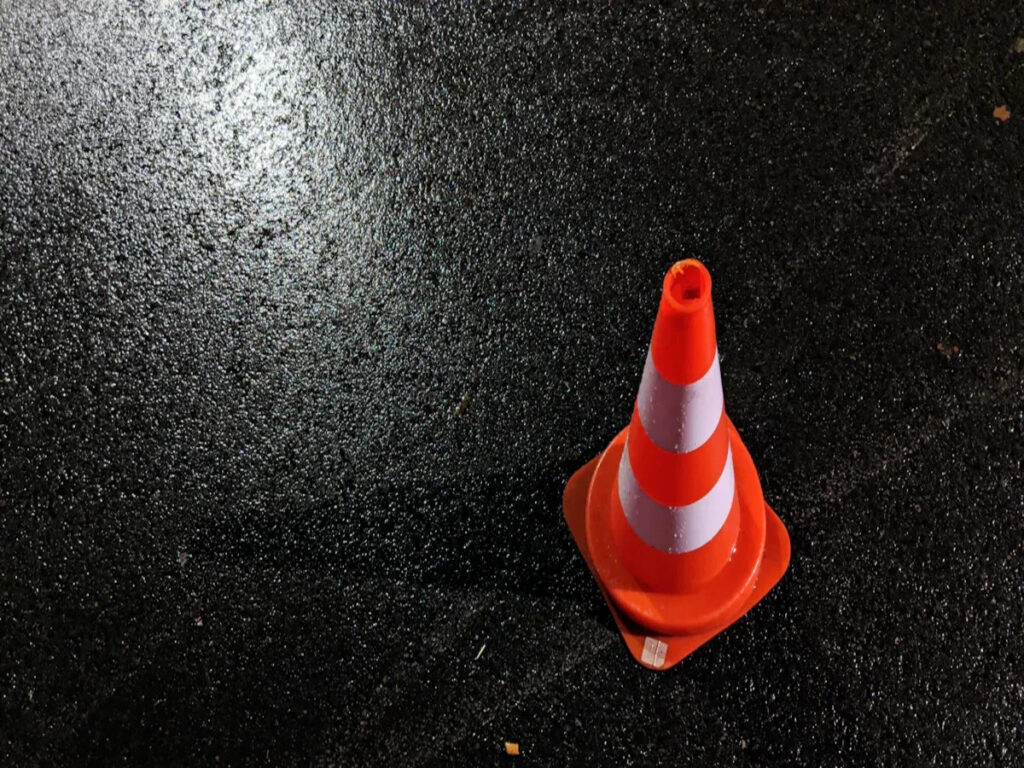
Daytime and Nighttime Impact
Você vê Cones de tráfego reflexivo on roads, rodovias, and construction sites every day. These cones use bright orange color and special reflective materials to catch your eye. Durante o dia, sunlight makes the orange stand out against the gray pavement. You notice these cones from far away, which helps you stay alert and keep your car in the right lane. The color orange signals caution, so you slow down and pay attention.
À noite, reflective traffic cones become even more important. Headlights from your car hit the reflective strips on the cones. The cones shine back, making them easy to spot in the dark. This high visibility helps you react quickly, even when streetlights are dim or missing. You can see the cones from a distance, so you have more time to adjust your speed and position. When you drive in fog, chuva, or low-light conditions, reflective traffic cones give you clear signals to follow. You stay safer because you can see where to go and what to avoid.
Researchers have found that your eyes respond well to bright, reflective surfaces in low-light settings. In some studies, people with special eye conditions showed supernormal cone sensitivity. Their eyes picked up twice as many cones as normal, which made objects stand out more in the dark. This research shows that reflective materials can boost visibility for all drivers, not just those with special vision. When you see reflective traffic cones, your brain reacts faster, and you make safer choices.
Dica: Always look for reflective traffic cones when driving at night. They help you stay in your lane and avoid hazards.
Research and Reduction Statistics
Reflective traffic cones do more than just mark lanes. They play a key role in reducing lane deviation and improving road safety. Studies show that when you see these cones clearly, you are less likely to drift out of your lane. Na verdade, using reflective traffic cones can cut lane deviation by up to 40%. This means fewer accidents and safer roads for everyone.
You benefit from increased visibility, especialmente em condições de pouca luz. Research using advanced eye tests found that even in areas with low reflectivity, people could still detect cones and respond to them. Em um estudo, subjects identified visual cues 48% of the time in low-reflectivity zones, comparado com 78% in normal zones. This proves that reflective traffic cones help you see better, even when lighting is poor.
Here is a quick summary of how reflective traffic cones improve safety:
- You spot cones faster, dia e noite.
- You react sooner to changes in the road.
- You keep your car centered, reducing lane deviation.
- You avoid sudden swerves and accidents.
- You feel more confident, which leads to better driving decisions.
| Beneficiar | Daytime Impact | Nighttime Impact |
|---|---|---|
| Visibilidade | Alto | Muito alto |
| Tempo de reação do motorista | Rápido | Mais rápido |
| Lane Deviation | Reduced | Greatly Reduced |
| Overall Safety | Melhorou | Strongly Improved |
Reflective traffic cones give you the visual cues you need to drive safely. You trust what you see, so you make better choices. When you follow the path marked by these cones, you help keep yourself and others safe.
Observação: Road crews use reflective traffic cones because they know you rely on visibility to make quick, safe decisions.
Aplicações do mundo real
Zonas de construção
You often see construction zones filled with bright orange cones. These cones play a key role in keeping you and other drivers safe. The orange color stands out against the road, making it easy for you to spot changes ahead. Visibility matters most in these areas because you need to react quickly to lane shifts and hazards. Research shows that cones with bright colors and reflective materials help you see the path, mesmo à noite. When headlights hit the reflective strips, visibility increases, and you can follow the lane safely.
Proper placement of cones also improves visibility. When cones line up in a clear pattern, you know where to drive. You avoid confusion and sudden lane changes. Studies found that cones with cube-corner lenses reflect light better, giving you more visibility in low-light conditions. Plastic cones and drums also reduce crash risks compared to metal barriers. You get safer lane guidance and fewer hazards if you drift.
Construction crews use cones with fluorescent colors and reflective collars to boost visibility. These features help drivers like you spot the work zone from far away. You get more time to slow down and adjust your position. Smart cones with sensors now help guide autonomous vehicles, também. You benefit from better traffic flow and fewer accidents.
Dica: Always slow down when you see cones in a construction zone. High visibility means you can spot changes early and stay safe.
Estudos de caso
Many real-world examples show how visibility from traffic cones helps drivers stay in their lanes. Em um estudo, researchers tested different cone designs in work zones. They found that drivers responded faster and changed lanes more smoothly when cones had bright orange colors and reflective strips. Visibility made it easier for you to detect lane changes, especialmente à noite.
Another case involved a highway project where crews used cones with fluorescent collars. Drivers noticed the cones sooner and kept better lane discipline. Visibility improved by over 40%, and lane deviation dropped. Safety guidelines now recommend using cones with high visibility features in all major construction projects.
A city pilot program added smart cones with sensors to a busy road. These cones sent signals to alert drivers and autonomous vehicles about lane closures. Visibility increased, and the number of near-miss incidents fell. You can see how better visibility from cones leads to safer roads for everyone.
Observação: Visibility is your best tool for safe driving in work zones. Look for bright, reflective cones to guide your way.
You improve safety when you use traffic cones with the right color and reflective materials. Bright orange cones help you react within three seconds and reduce lane deviation by 40%. Numerical data guides experts to set clear safety benchmarks and develop better road safety equipment. You help make roads safer when you support evidence-based practices. Road safety authorities and professionals should always choose tools that use color psychology and high visibility.
Perguntas frequentes
How does the color orange help you stay alert while driving?
Orange stands out on the road. Your eyes notice it quickly. This color signals caution and grabs your attention. You react faster when you see orange cones. You stay more focused and avoid drifting out of your lane.
Why do reflective cones work better at night?
Reflective cones shine when headlights hit them. You see them from far away, Mesmo no escuro. This extra visibility helps you spot lane changes and hazards. You get more time to react and keep your car centered.
What is the 3-second rule, and how does it keep you safe?
The 3-second rule helps you keep a safe distance from the car ahead. You count three seconds after the car passes a marker. This gap gives you time to notice hazards and stop safely.
Can using the right color cones really reduce lane deviation by 40%?
Sim! Studies show that bright orange and reflective cones help you see lane boundaries better. You react faster and stay centered. This simple change can cut lane deviation by up to 40%.
Where do you see the biggest benefits from using reflective cones?
You see the biggest benefits in construction zones, estradas movimentadas, E à noite. Reflective cones guide you through lane changes and warn you about hazards. You drive safer and avoid sudden swerves.


